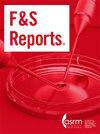Semen parameters in transgender women and gender-diverse people assigned male at birth using gender-affirming hormones: cohort study and scoping review
IF 2.2
引用次数: 0
Abstract
Objective
To assess semen parameters, hormone levels, and the psychological experience of transgender (TG) women and gender-diverse (GD) people assigned male at birth using gender-affirming hormones (GAH) and to summarize the current literature on this topic.
Design
Cohort study and scoping review.
Patients
Fifteen people assigned male at birth identifying as TG or GD using GAH (12 TG women and 3 GD people).
Exposure
Gender-affirming hormone therapy (estradiol, antiandrogen, +/- progesterone).
Main Outcome Measures
The primary outcomes of the cohort study were semen parameters (volume, concentration, motility, and total motile count). Secondary outcomes included serum levels of gonadotropins, estradiol, and testosterone. Secondary outcomes also included qualitative data about the specimen collection experience. The primary outcome of the scoping review was to evaluate the current literature on semen parameters of TG women and GD people on GAH by determining the number of studies, key objectives, and findings.
Results
Cohort study: Fifteen participants attempted to produce a semen sample. Thirteen participants (87%) produced a specimen for analysis; 8 were azoospermic (61.5%) and 5 contained sperm (38.5%). Of all included participants, only 4 participants (26.7%) were able to produce a sample with motile sperm. The median concentration was 25.0 million/mL (range: 0.2–99.0), motility 22% (range: 0–70%), and total motile count 2.5 million (range: 0–70.0). All participants with motile sperm had luteinizing hormone (median: 3.8 IU/L, interquartile range [IQR]: 1.9–5.2) and testosterone levels (median: 193 ng/dL, IQR: 94.5–330.5) that were significantly higher than the remainder of the cohort. Estradiol (median: 147 pg/mL, IQR: 100.5–410) and follicle-stimulating hormone (median: 0.4, IQR: 0.2–1.55) levels among participants with motile sperm did not differ significantly compared with the remainder of the cohort. Producing a specimen was rated as moderately difficult physically (median: 4.0, IQR: 2.0–7.5) and psychologically (median: 4.0, IQR: 2.0–6.0) (where 1=easy, 9=difficult). Participants advised that assuring sound-proofed collection rooms or home collection could improve the collection experience.
Scoping review
682 abstracts were eligible for screening. 12 sources were included in the final analysis. Most studies demonstrated that GAH negatively impacted semen parameters. One case report, and no cohort studies, examined hormonal profiles at the time of specimen collection.
Conclusion
Consistent with prior limited data, in a cohort of TG women and GD people assigned male at birth using gender-affirming hormones, semen parameters were abnormal and often azoospermic. The ability to produce motile sperm may be associated with less hypothalamic suppression (higher luteinizing hormone and testosterone levels). Providing an inclusive and private environment may ease some of the challenges associated with collection.
使用性别确认激素的跨性别女性和性别多样化人群的精液参数:队列研究和范围回顾
目的评价性别确认激素(GAH)对跨性别(TG)女性和性别多样性(GD)男性的精液参数、激素水平和心理体验的影响,并总结目前有关这一主题的文献。设计队列研究和范围回顾。15名出生时被指定为男性的患者使用GAH识别为TG或GD(12名TG女性和3名GD人)。暴露:性别确认激素治疗(雌二醇,抗雄激素,+/-孕酮)。主要结局指标队列研究的主要结局是精液参数(体积、浓度、活动力和总活动力计数)。次要结果包括血清促性腺激素、雌二醇和睾酮水平。次要结果还包括标本采集经验的定性数据。本综述的主要目的是通过确定研究数量、主要目标和研究结果,评估目前关于甘油三酯女性和GD患者的精液参数的文献。结果:简短的研究:15名参与者试图产生精液样本。13名参与者(87%)提供标本进行分析;无精子8只(61.5%),含精子5只(38.5%)。在所有被纳入的参与者中,只有4名参与者(26.7%)能够产生具有活动精子的样本。中位浓度为2500万/mL(范围:0.2-99.0),运动性22%(范围:0-70%),总运动性计数250万(范围:0-70.0)。所有精子活动的参与者体内的黄体生成素(中位数:3.8 IU/L,四分位间距[IQR]: 1.9-5.2)和睾酮水平(中位数:193 ng/dL, IQR: 94.5-330.5)均显著高于其他参与者。运动精子参与者的雌二醇(中位数:147 pg/mL, IQR: 100.5-410)和促卵泡激素(中位数:0.4,IQR: 0.2-1.55)水平与其他队列相比没有显著差异。制作标本的物理难度(中位数:4.0,IQR: 2.0-7.5)和心理难度(中位数:4.0,IQR: 2.0-6.0)(其中1=容易,9=困难)。与会者建议,确保收集室或家居收集室隔音,可改善收集室的体验。682篇摘要符合筛选条件。最后的分析包括12个来源。大多数研究表明,GAH对精液参数有负面影响。一个病例报告,没有队列研究,检查了标本采集时的激素谱。结论:与先前有限的数据一致,在一组使用性别确认激素的TG女性和GD女性中,精液参数异常且经常无精子。产生活动精子的能力可能与较少的下丘脑抑制(较高的黄体生成素和睾酮水平)有关。提供一个包容和私密的环境可能会缓解与收集相关的一些挑战。
本文章由计算机程序翻译,如有差异,请以英文原文为准。
求助全文
约1分钟内获得全文
求助全文

 求助内容:
求助内容: 应助结果提醒方式:
应助结果提醒方式:


